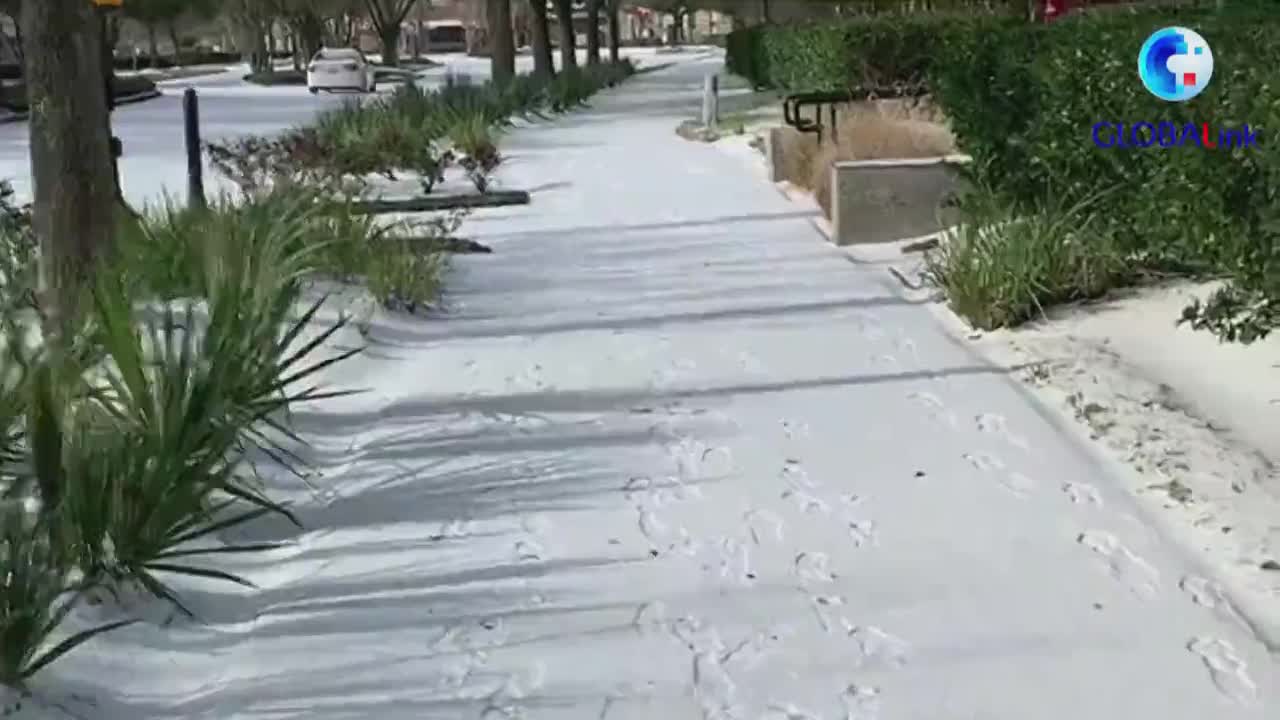After a rare winter storm, temperatures in Texas in the southern United States finally began to rise on February 20. However, the double critical blow of natural and man-made disasters is not over. Many residents have received sky-high electricity bills, and many people face tight drinking water and food supplies. In this case, there are also bad merchants who take the opportunity to bid up prices.
Test one, the electricity is coming, and the electricity bill is also coming.
The Texas Electricity Reliability Commission announced on February 19 that it would lift the state’s “three-level warning of electricity emergency”, and there was no longer a need to pull the brakes in turn to limit electricity everywhere. According to the website monitoring the national power supply, as of the afternoon of the 20th, more than 54,000 households across Texas were still in power outages.
Power supply was restored, but some families were surprised to find that they had received sky-high electricity bills. A northern Texas resident told Fox News that he was a user of Netdi Energy. Although the whole family saved as much electricity as possible during the winter storm, the electricity bill in five days was as high as $17,000. Another Houston resident said that her electricity bill for the past week was $5,500.
Netdi Energy Company implements real-time floating electricity prices. Before the winter storm, the company advised users to switch to other power suppliers to avoid excessive electricity charges, but many users found that the rest of the suppliers were no longer accepting new customers at that time, or it would take several days to complete the formalities.
In addition to sky-high electricity charges, Texas people have also clearly felt the rise in hotel and gasoline prices recently. On the 20th, gasoline prices in large Texas cities rose by 10% to 20% compared with the pre-winter storm.
In fact, in 2011, a similar cold current hit the large energy state of the United States and caused a major power outage, and the similar tragedy repeated 10 years later, and Texas obviously failed to learn a lesson. Analysts point out that in addition to rare extreme weather, the lack of preparation of the power sector, the shirking of responsibility of government agencies and the independent power supply system in Texas are important reasons for Texas’s further hit.
The ineffective response of the Texas government to disasters has been widely criticized by the public. The government departments failed to make full preparations in advance, and also blamed each other with the authorities to make the public dissatisfied.
Test two, I dare not drink water at ease, and the food inventory is insufficient.
According to statistics, more than 150,000 people in the state still interrupt the water or tap water quality abnormally, and nearly half of the residents in the state need to boil tap water for at least two minutes to drink it.
Most supermarkets currently sell barreled water in limited quantities. It is also reported that some bad merchants split boxes of bottled water and sold them as bottles at two to three times the original price.
Texas’ food supply has not returned to normal on the 20th. Ready-to-eat food in large supermarkets has been snapped up, and there is a clear shortage of goods such as meat, eggs, milk, vegetables and fruits.
At a press conference held on the 20th, Texas officials said that the state has ordered 10 million bottles of bottled water and more than 5 million ready-to-eat food, which will be distributed to people in need throughout the state.
Some officials said that some bad merchants regarded the natural disaster as an opportunity to make huge profits. Houston launched a price reporting system on the 17th, and received 450 complaints in the first 20 hours.
According to Texas law, it is illegal to raise the price of necessities such as food, medicine and gasoline at will during a disaster situation. The government appealed to the public to continue to report price gouging.
This rare cold current has directly or indirectly caused dozens of deaths. Experts expect that the related death toll will continue to rise over time.
Equally alarmingly, extreme weather has also caused large delays in the supply and vaccination of COVID-19 in Texas. Many vaccination centers have been forced to close due to the interruption of vaccine transportation caused by snow and freezing, and some scheduled vaccinations have to be cancelled. The health department said that vaccination work would not resume until at least the road conditions improved. Obviously, the epidemic will be another severe test after the disaster in Texas.
Background link
Affected by the polar cold current, parts of Texas began to encounter snow, ice, freezing rain, etc. on the night of the 14th, causing road surfaces to freeze, roads to be blocked and widespread power outages. The Texas Electricity Reliability Commission announced on the 15th that the state had entered a “power emergency three-level alert”, and the regions took turns to pull the gates and limit electricity.
At present, the U.S. government has declared parts of Texas a “major disaster state”, and the federal government’s rescue workers and supplies are in place.



